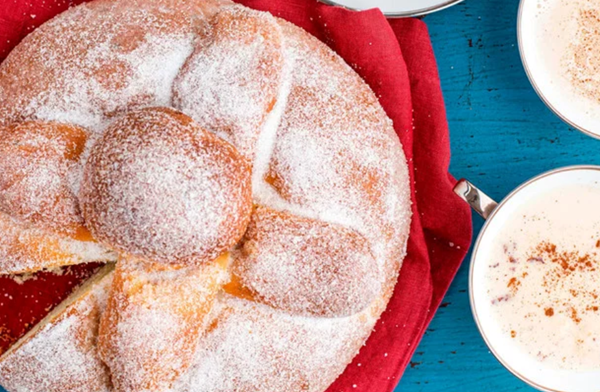The foods of Día de Muertos
November 2, 2022 by DarcieOn the heels of Halloween is the Mexican celebration Día de Muertos or Day of the Dead, celebrated November 1-2 each year. Day of the Dead celebrations can be traced to the ancient Aztecs, who felt that instead of mourning the deceased, people should celebrate their lives and welcome their spirits back to the land of the living once a year.
Spanish conquistadors brought Catholic missionaries who exerted their influence on the tradition, and the resulting blending of cultures created the celebration known today. The holiday has spread from Mexico to the US and around the world.

Spanish conquistadors brought Catholic missionaries who exerted their influence on the tradition, and the resulting blending of cultures created the celebration known today. The holiday has spread from Mexico to the US and around the world.
Common traditions for this holiday include creating altars to honor the dead, preparing offerings, sharing stories of the deceased, and decorating gravesites. The holiday is a festive day, with many colorful crafts on display. And like most celebrations, Día de Muertos has its own traditional foods like candied pumpkin, highly decorated sugar skulls, tamales, and pan de muerto or “bread of the dead.”
Pan de muerto is a sweetened soft bread shaped into a boule and often decorated with bone-shaped pieces and frequently sprinkled with sugar or sesame seeds. Traditionally it is eaten at the altar (ofrenda) of the deceased, along with his or her favorite foods.
Categories
- All Posts (6940)
- Antipasto (2135)
- Author Articles (247)
- Book News (935)
- Cookbook Giveaways (983)
- Cookbook Lovers (257)
- Cooking Tips (109)
- Culinary News (299)
- Food Biz People (552)
- Food Online (791)
- Holidays & Celebrations (272)
- New Cookbooks (149)
- Recipes (1500)
- Shelf Life With Susie (231)
- What's New on EYB (133)
Archives
Latest Comments
- kmwyman on Rooza by Nadiya Hussain – Cookbook Review and Giveaway
- Maryd8822 on The Golden Wok – Cookbook Giveaway
- Dendav on Danube Cookbook Review and Giveaway
- sanfrannative on Rooza by Nadiya Hussain – Cookbook Review and Giveaway
- darty on Danube Cookbook Review and Giveaway
- Atroyer7 on Danube Cookbook Review and Giveaway
- demomcook on What foods do you look forward to the most for each season?
- demomcook on Danube Cookbook Review and Giveaway
- Darcie on How cookbooks can help build resilience
- mholson3 on Danube Cookbook Review and Giveaway